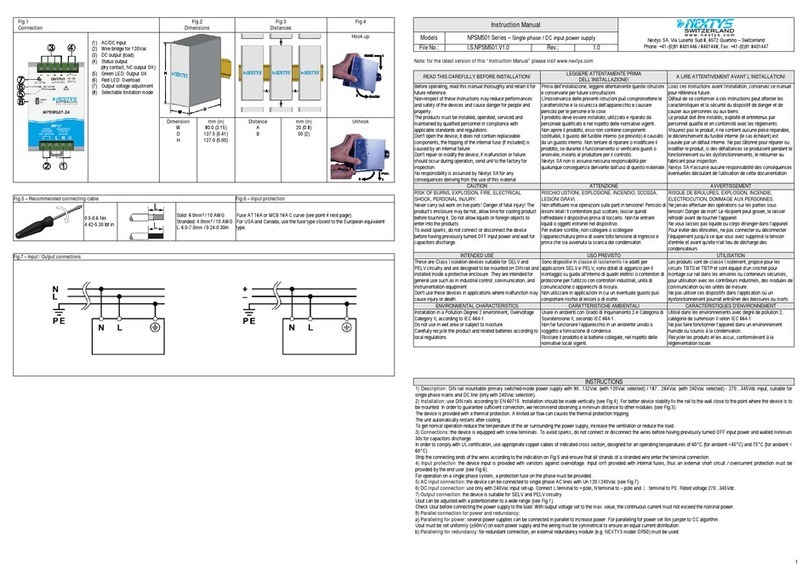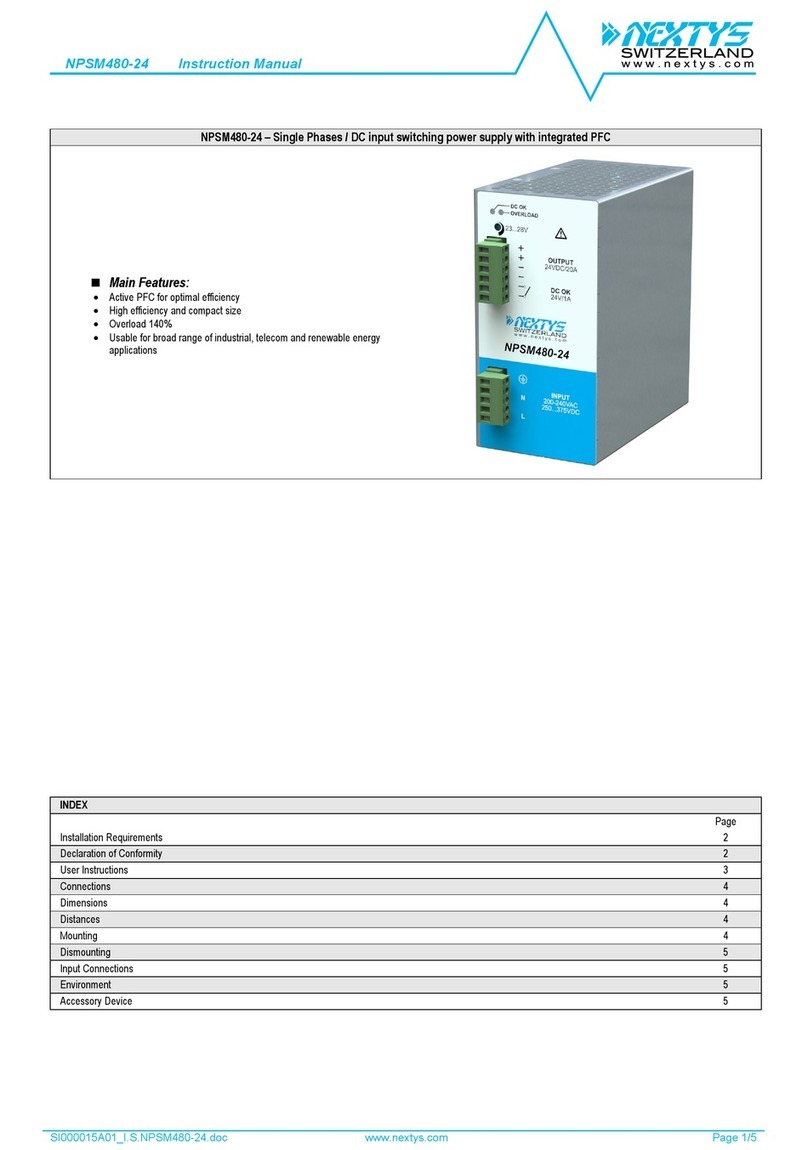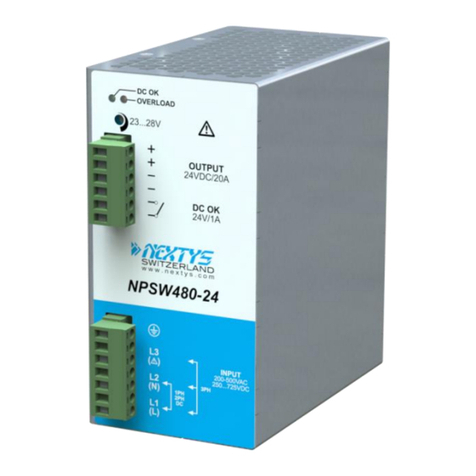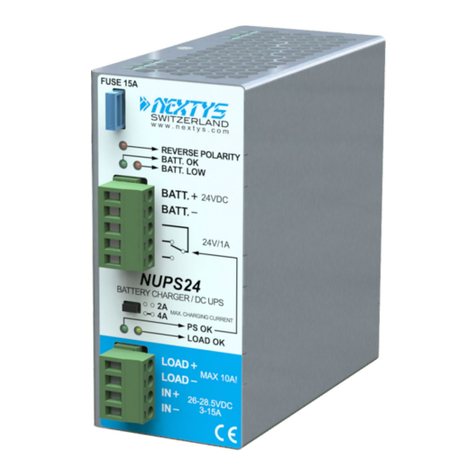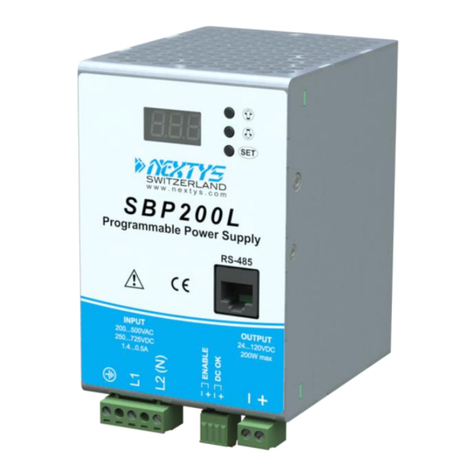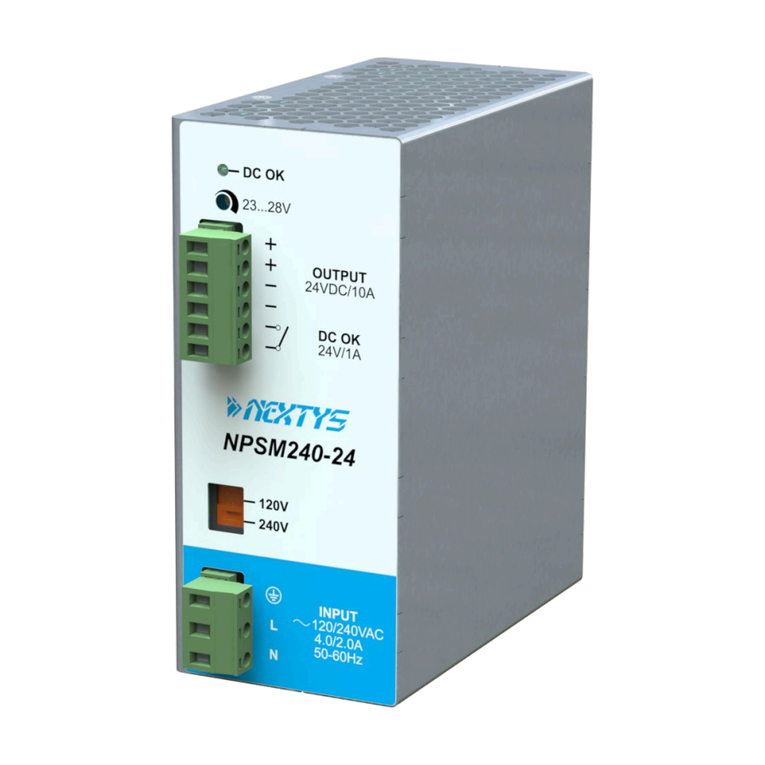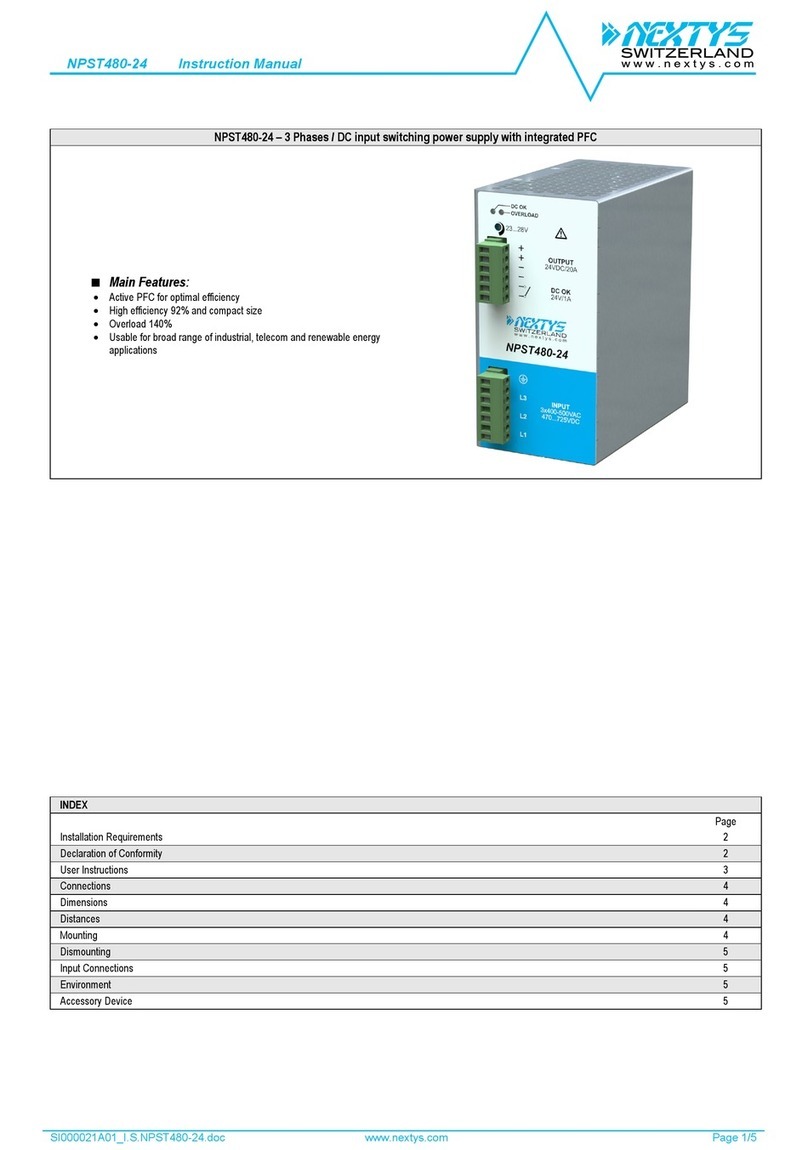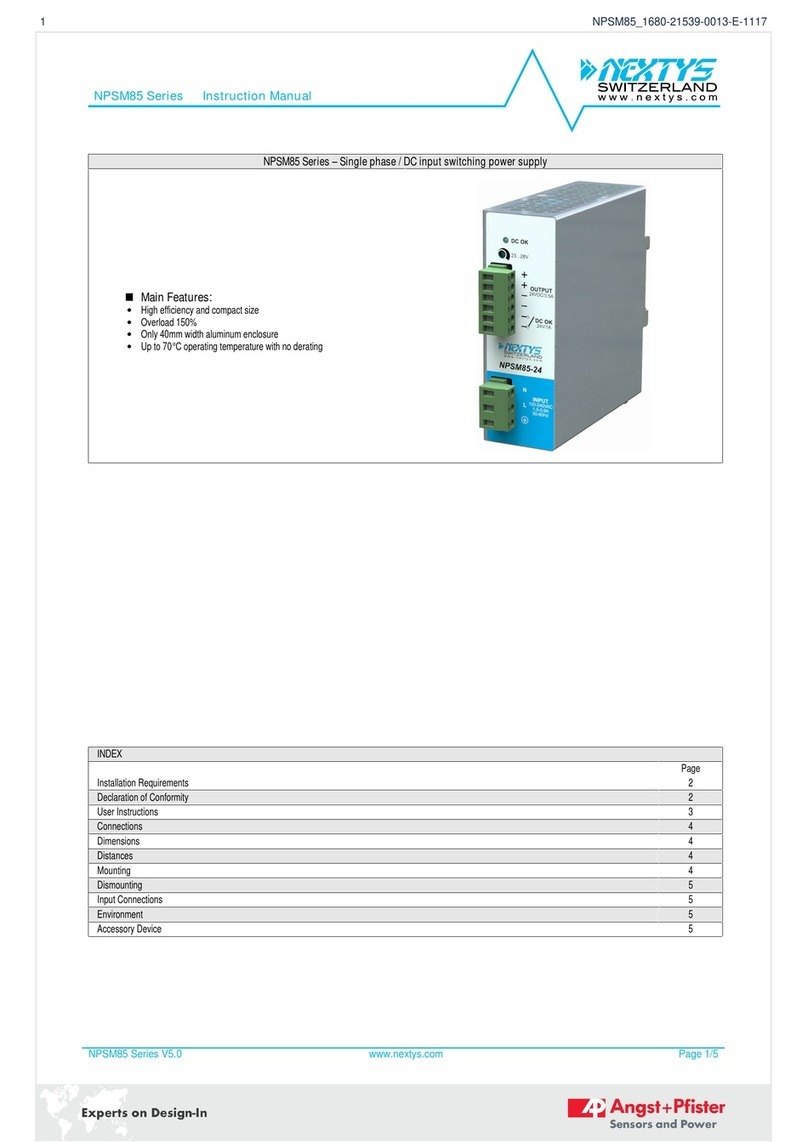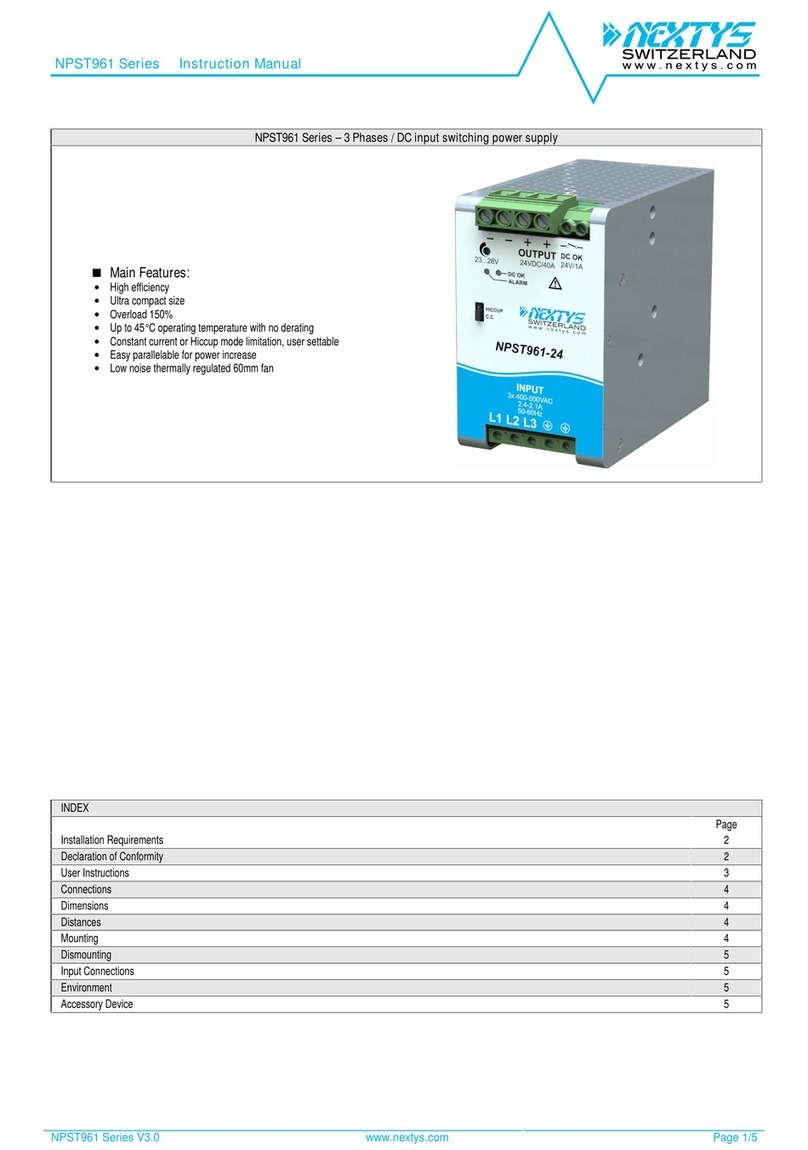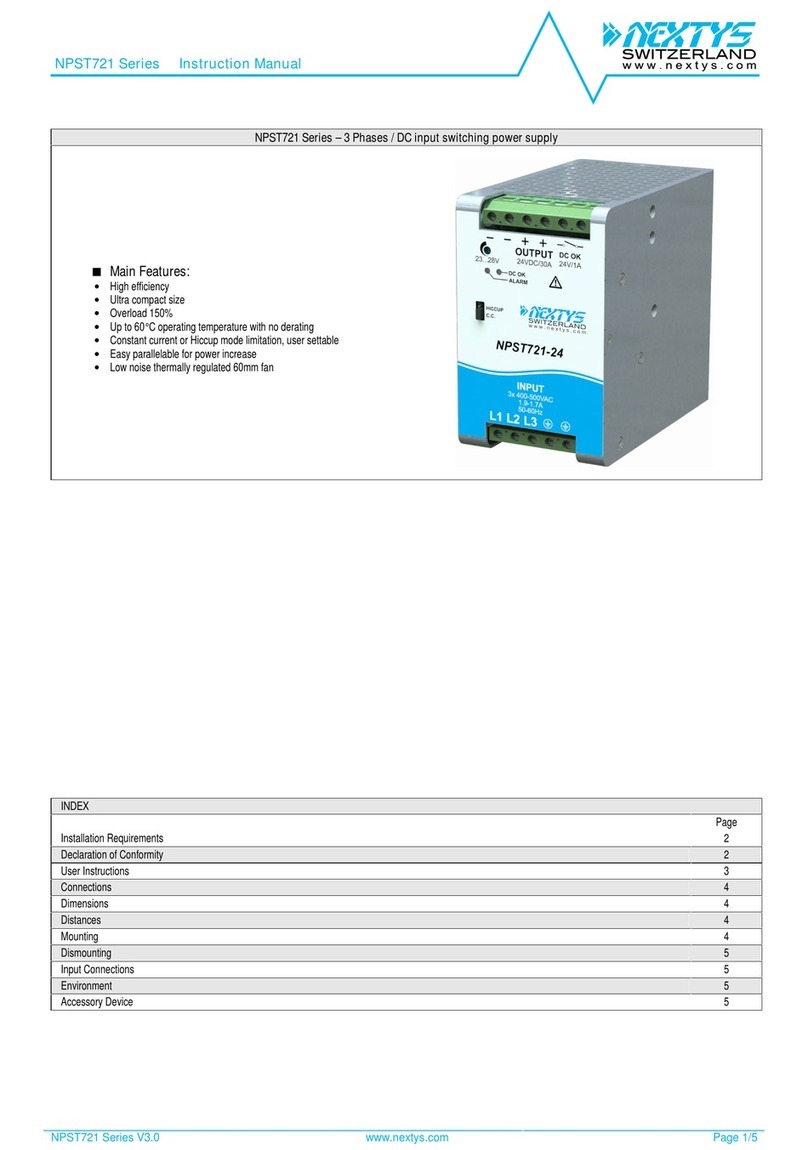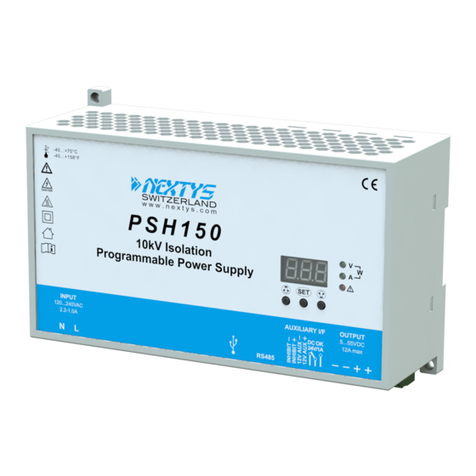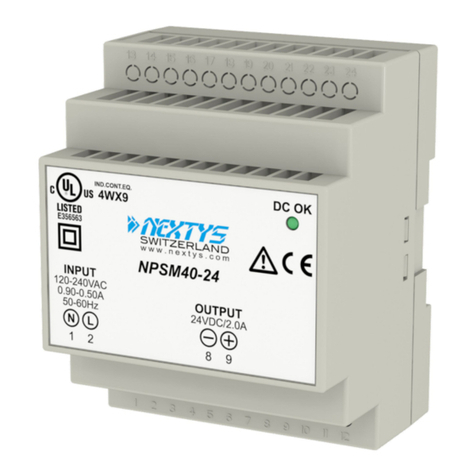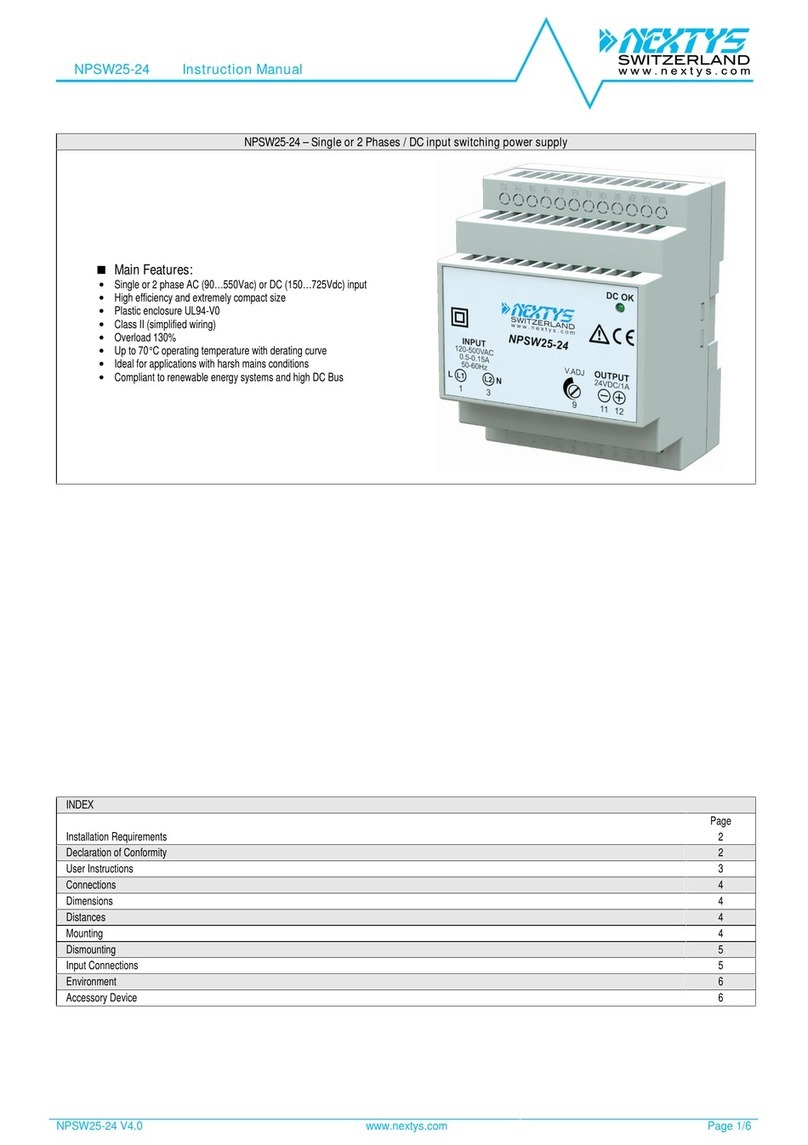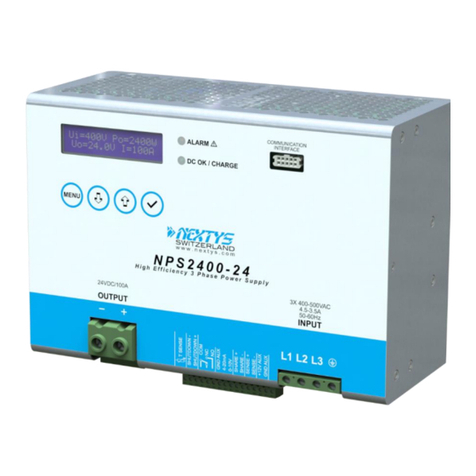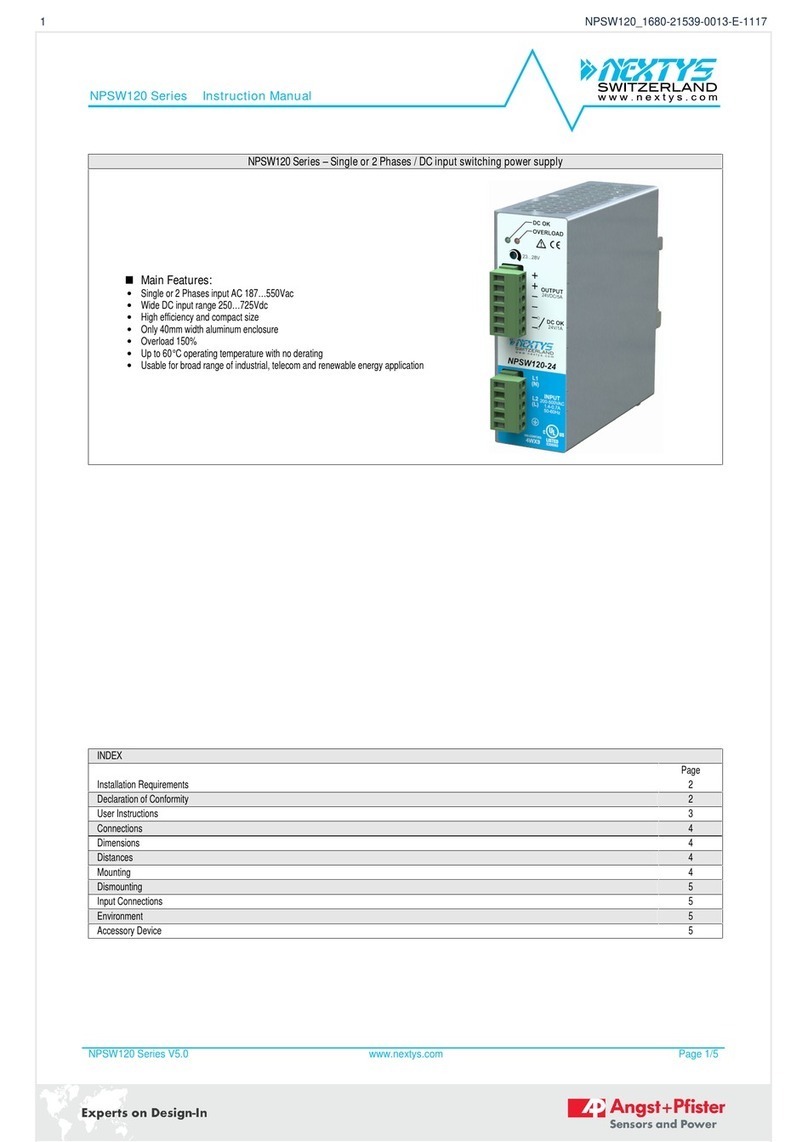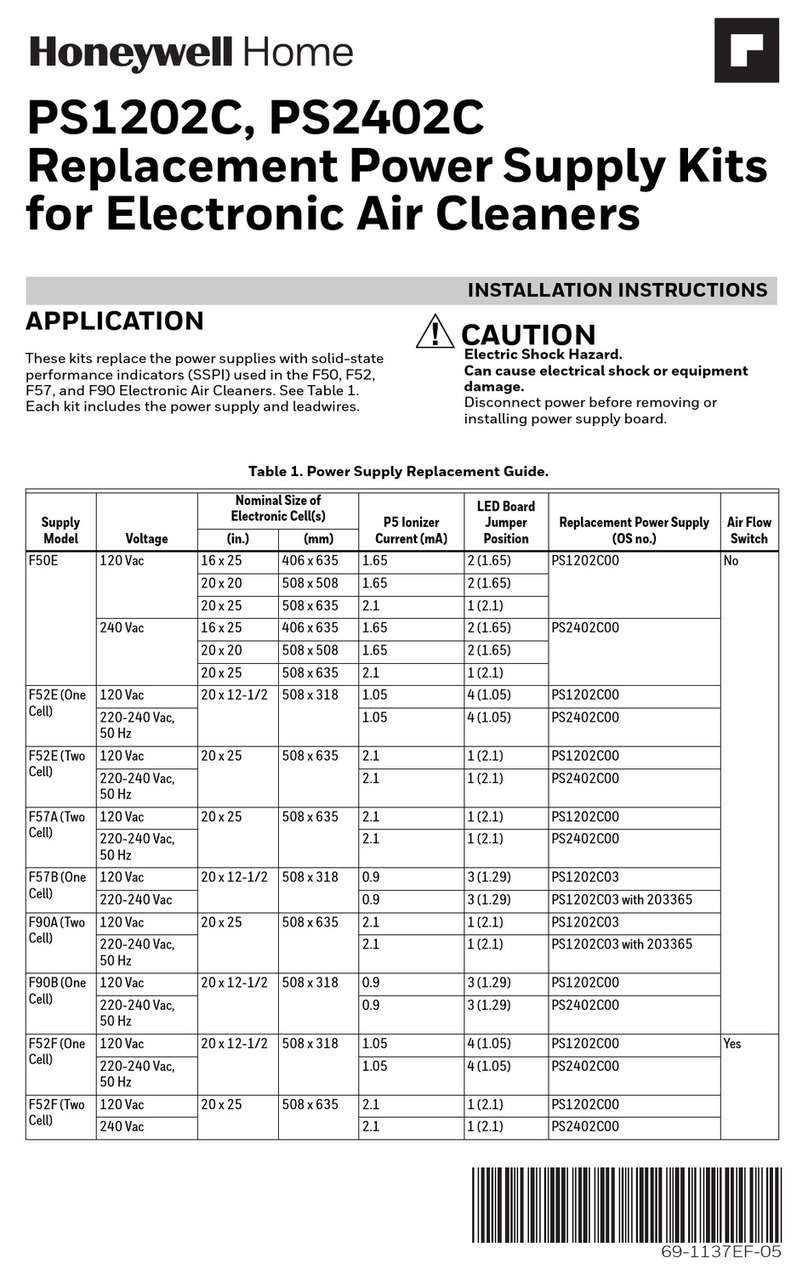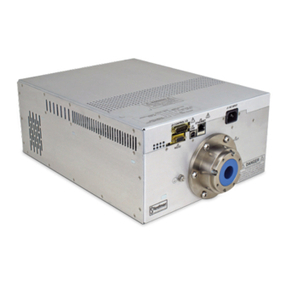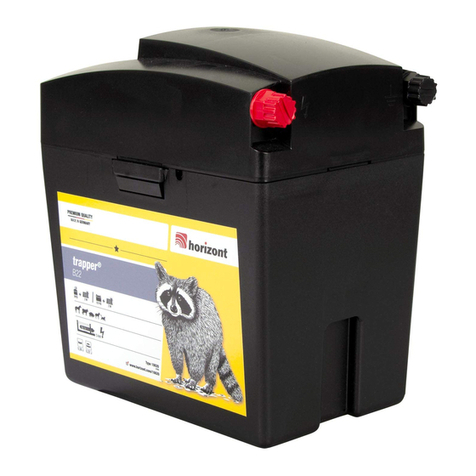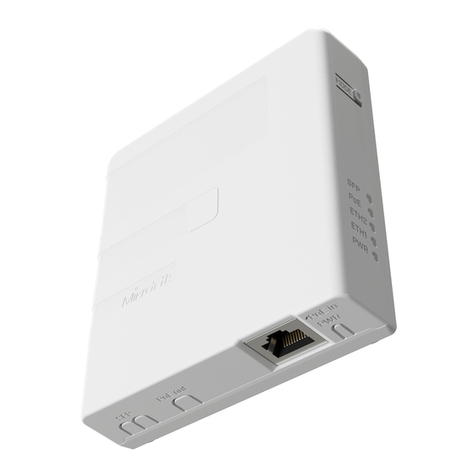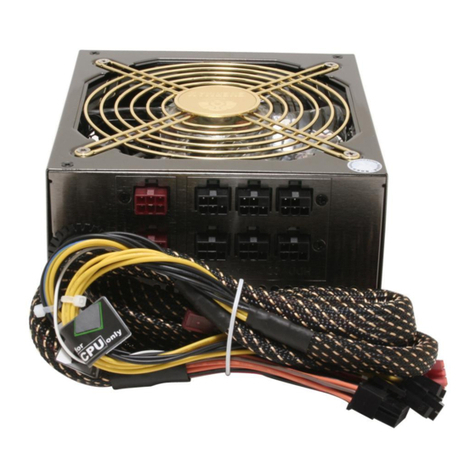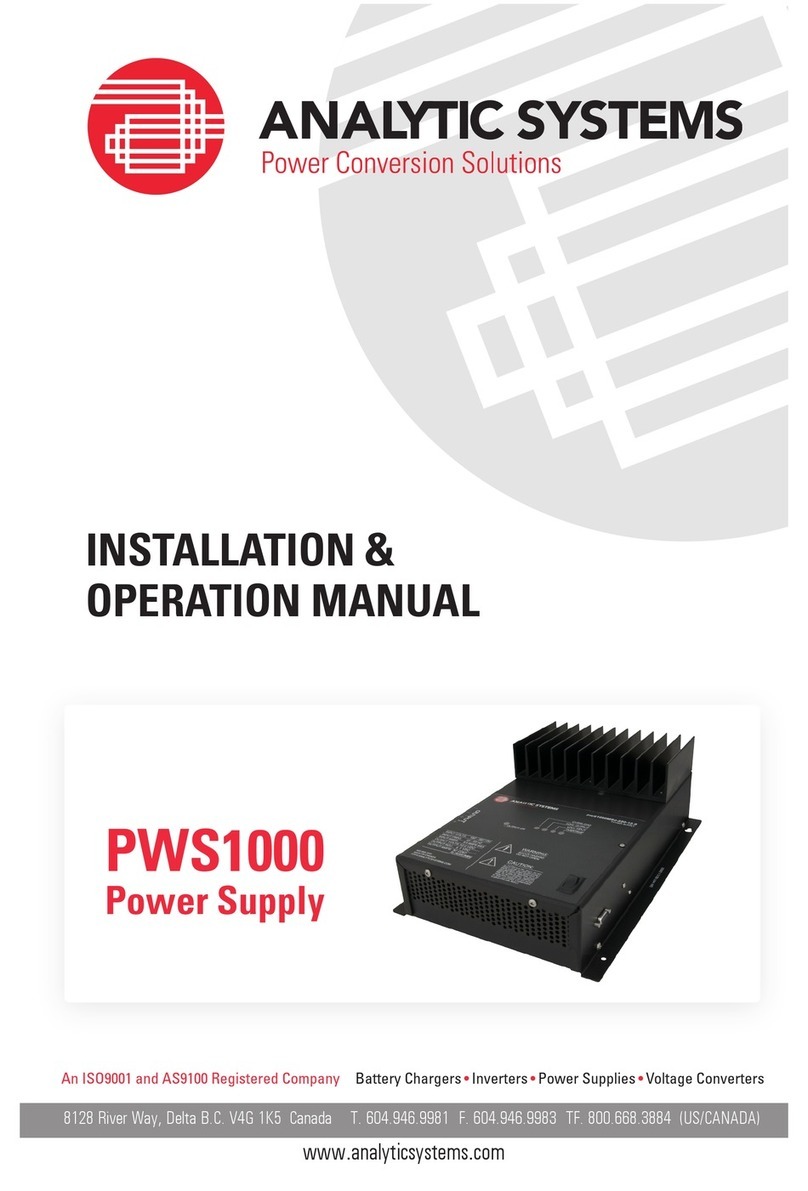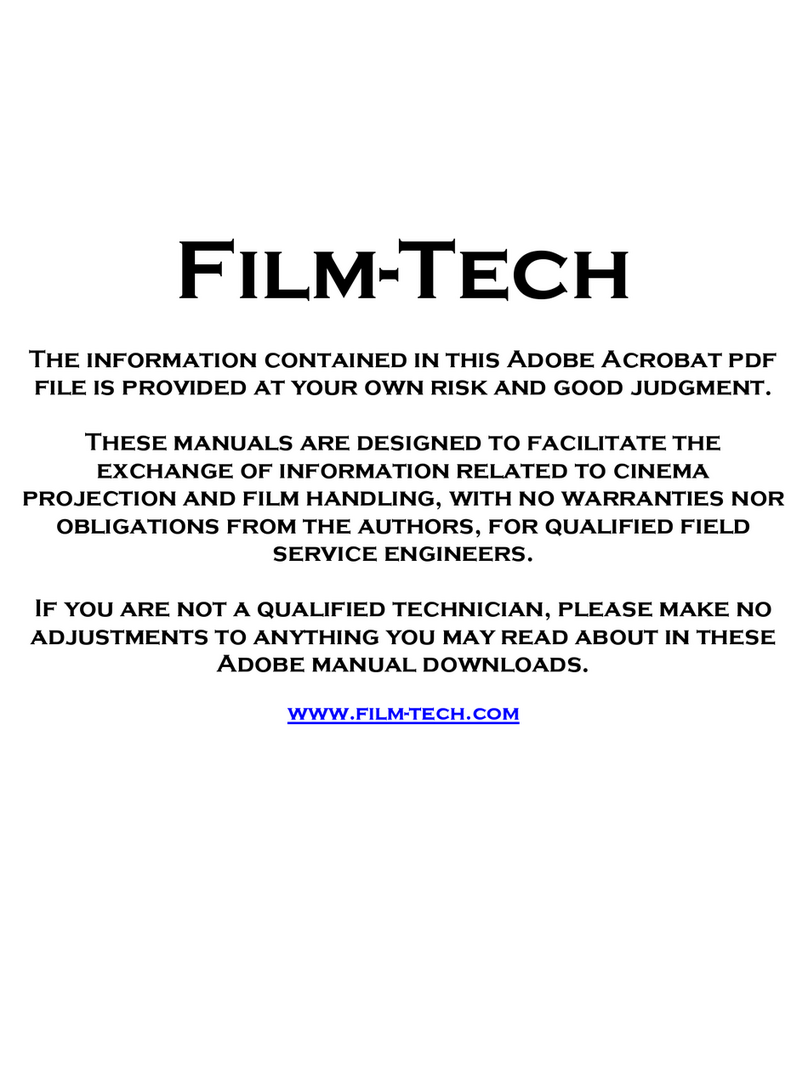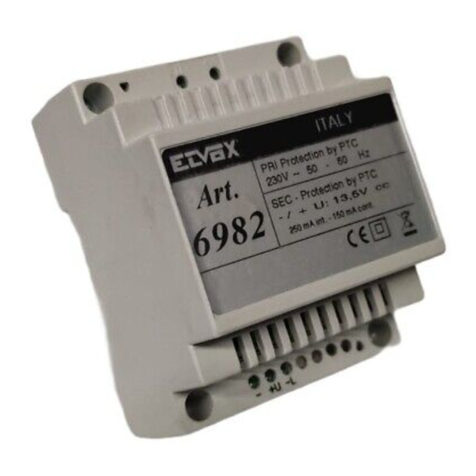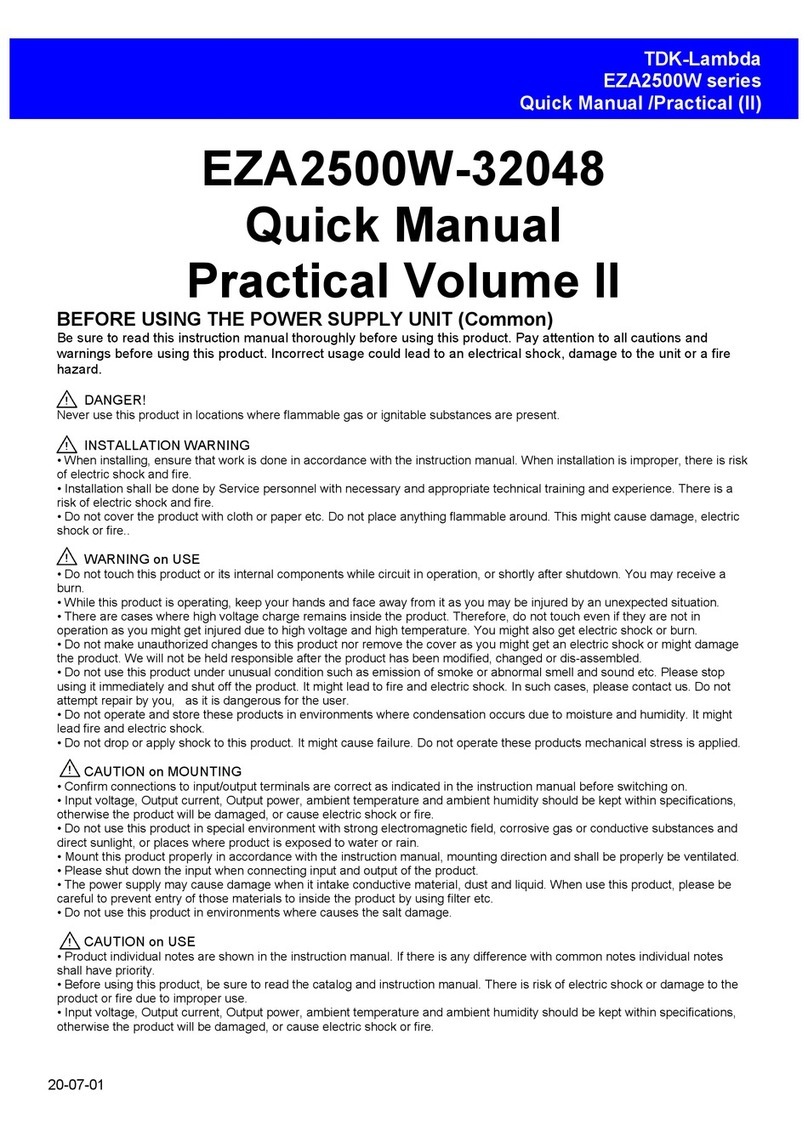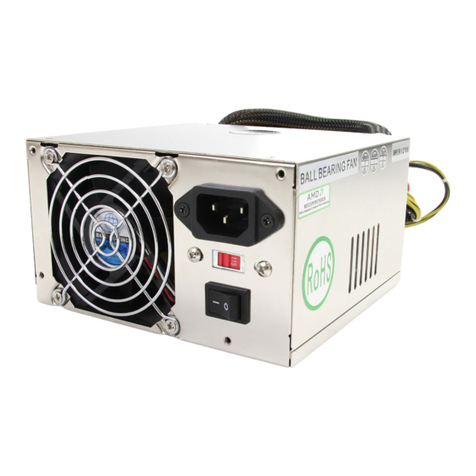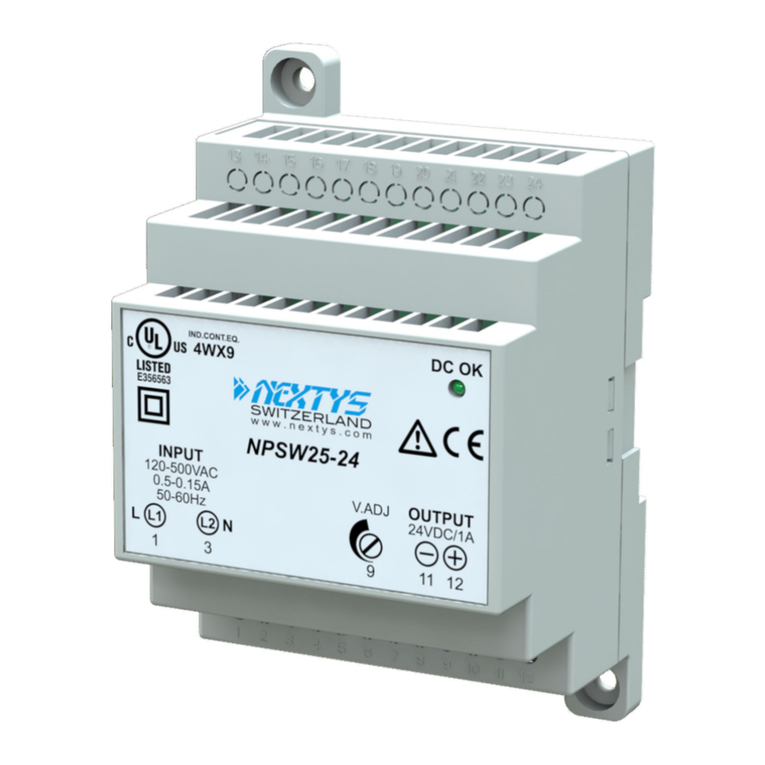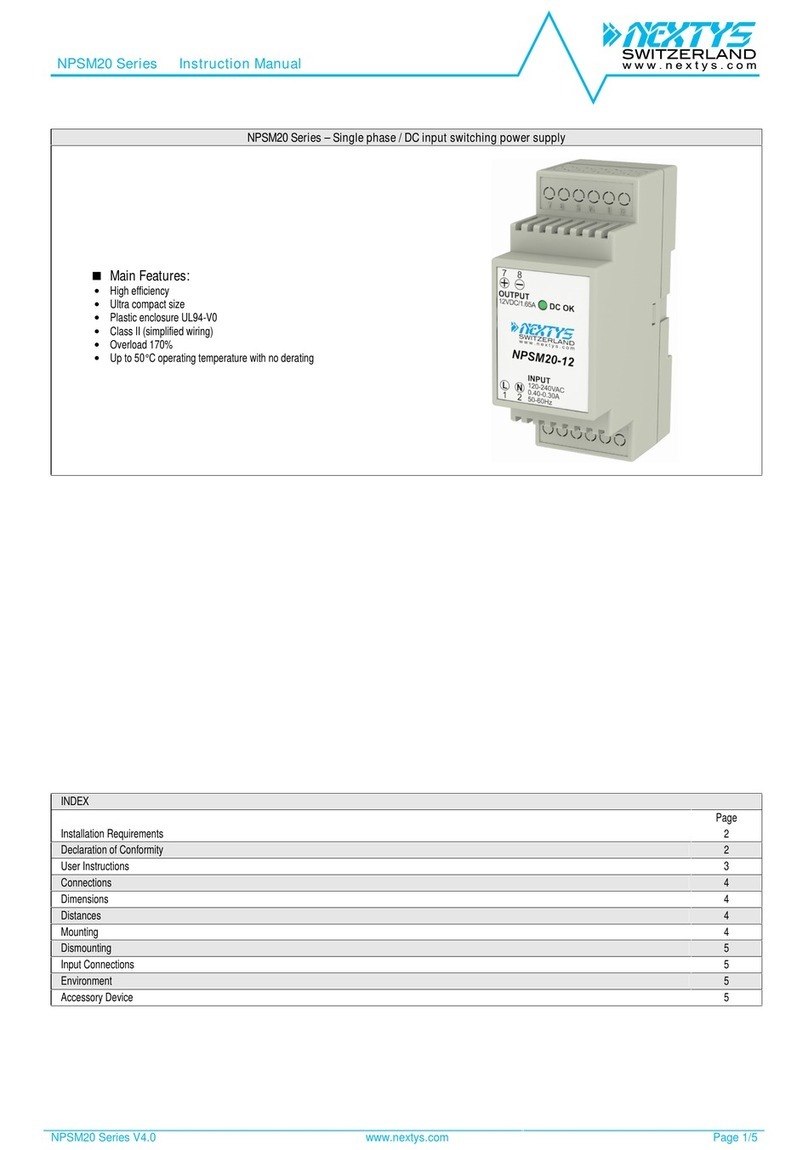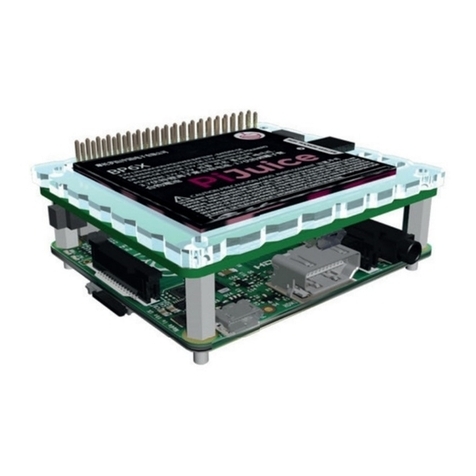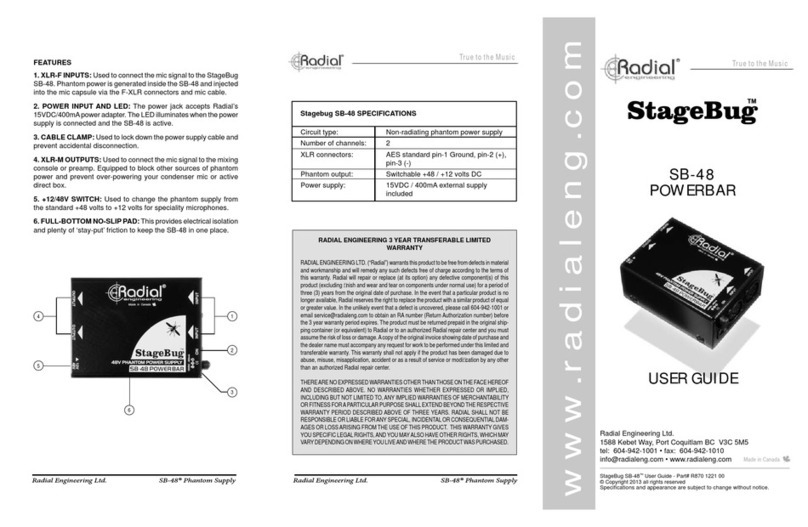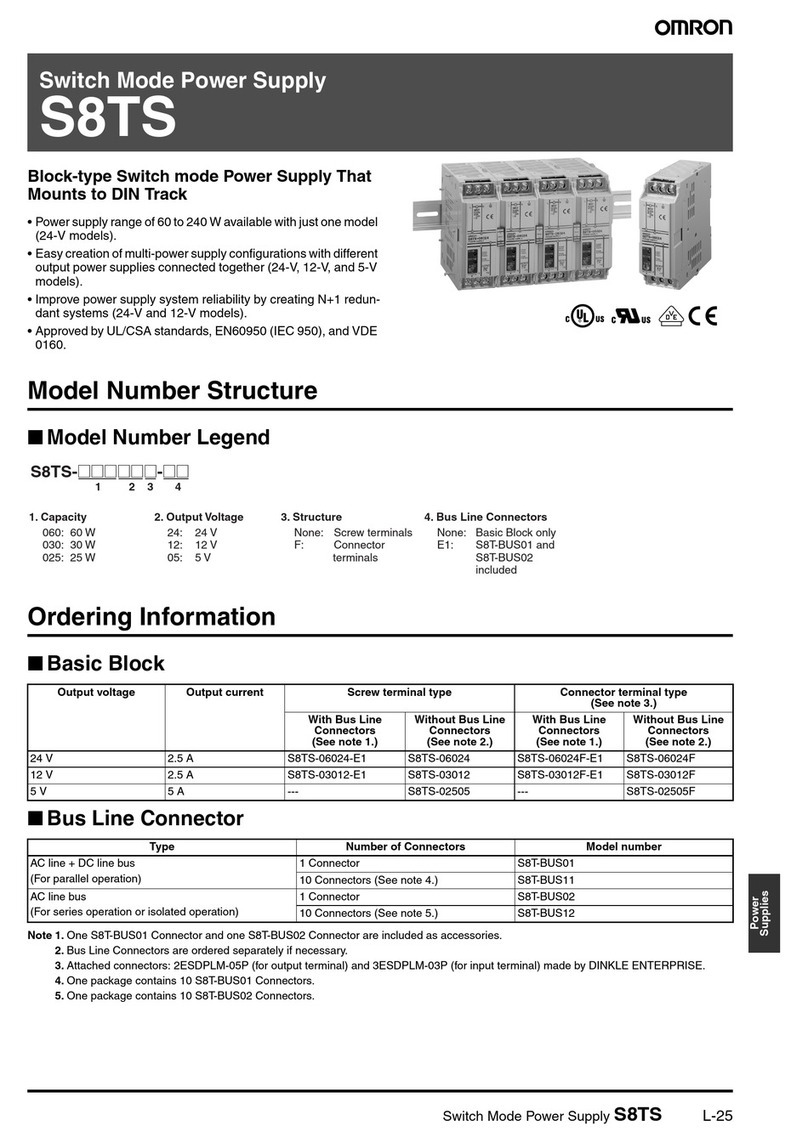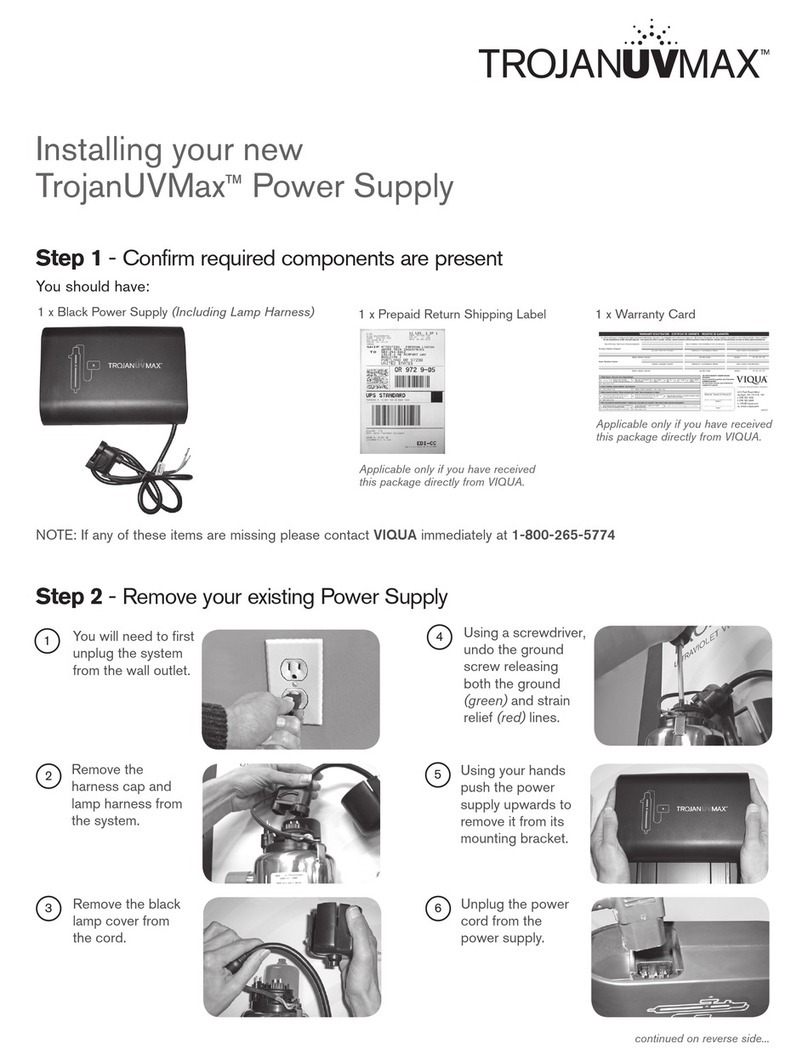1) Description: DIN rail mountable primary switched-mode power supply with 90...264Vac (110…345Vdc) input, suitable for Single phase main line and DC line.
2) Installation: use DIN-rails according to EN60715. Installation should be made vertically(see Fig.4). For betterdevice stabilityfix the rail to the wallclose to the point where
the device isto be mounted. Inorder to guarantee sufficient convection, we recommend observing a minimumdistance to other modules (see Fig.3).
The device isprovided with a thermal protection; a limited air flow can cause the thermal protection tripping.
The SMPS automatically restartsafter cooling. Toget normal operation reduce thetemperature ofthe air surrounding the power supply, increase the ventilation or reduce the
load (see Fig.8)
3) Connections: the device is equipped with pluggable screw terminals. To avoid sparks, do not connect or disconnect the connectors before having previously turned-off input
power and waited for internal capacitors discharge (minimum 1 minute)
In order to complywith UL certification, use appropriate coppercables of indicated crosssection, designed for an operating temperatures of:
60°C for ambient up to 45°C
75°C for ambient up to 60°C
90°C for ambient up to 70°C
Strip the connecting ends of the wiresaccording to the indication and ensure that all strands of a stranded wire enter the terminal connection (see Fig.5)
4) Input protection: the device input is provided with varistorsagainst overvoltage.Input is provided with internal fuses 8AT/250Vac, thusan external short circuit/overcurrent
protection mustbe provided bythe end user (see Fig.6).
For operation on a single-phase system, a protection fuse on the phase mustbe provided.
Surge protection: it is strongly recommended to provide external surgearresters (SPD) according to localregulations.
5) AC input connection: the device can be connected to single-phase AC lines with Uin 120…240Vac (see Fig.7). Please connect firstthe PE.
6) DC input connection: connect L terminal to (+) positive pole, N terminal to (-)negative pole and Iterminal to GND.Rated voltage 110...345Vdc.
The device isalso suitable for photovoltaicor wind turbine applications (see Fig.7).
7) Output connection: The device is suitable for SELV and PELV circuitry.Pay attention NPSM481-72 (P,H,PH) are notSELV.
Uout can be adjusted with a potentiometer to a wide range (see Fig.1)
Check Uout before connecting the power supply to the load. With output voltage set to the max. value, the continuous [currentx voltage] mustnot exceed the nominal power.
8) Parallel connection and redundancy: power supplies can be connected in parallel to increase power. For paralleling for power set the Ilim jumper to C.C. algorithm.
Uout must be set uniformly (±100mV) on each power supply and the wiring must be symmetrical to ensure an equal current distribution.
Models with “P” suffix have an integrated ORing circuit.
For redundant connection, use the Models “P” or an external isolating device mustbe used (see accessorydevice).
9) Output protection: the device is protected against overload (OL) / short circuit (SC) / overvoltage (OV) / overtemperature (OT).
OL and SC: are controlled by a hiccup mode or a constant current (C.C.) modeprotection with the following behaviour.
The Hiccup mode or C.C. mode are selectable with Jumper (see Fig.1)
OL behaviour in hiccup mode: Max.OL = 1.5 x In the output voltage remains constant at nominal voltage for 5s and after that time the device starts an ON/OFF cycle.
OL behaviour in C.C. mode: the maximum output current is limited at 1.1 x In ifthe load resistance is furtherdecreased the output voltage starts to drop.
SC behaviour in hiccup mode: the device supplies 1.5 x In for 5s,after that time itswitches off for10s. The ON/OFF cycle is repeated continuously.
SC behaviour in C.C. mode: the device supplies1.1 x In continuouslyinto the short circuitwithout switching off
Output OV circuit protection: the output is protectedagainst potential OVdue to internal malfunction or coming from the load for Uout Unom x 1.2 – 1.3, depending on the
model.
OT protection: turns offthe device ifthe internal temperature exceeds a safe limit.
The device restarts automatically after cooling down. To recover to normal operation reduce air temperature surrounding the power supply, increase coolingor reduce load
(see Fig.8).
10) Feeding DC motors: it is possible to feed DCmotors considering that whena motor starts-up under effortits consumption ismuch higher than the nominal current and it
can trigger overcurrent protection (see accessory device). For these applications the C.C. (Constant Current) mode of current limitation is recommended.
NOTE: motors can generate high conducted noiseon the DC line.Therefore it isnot recommended to feed on the same line motors and equipment sensitive to noise.
11) Operation with Battery: when a battery is connected in parallel to the Output for backup purposes;the NPSM481 must be set on C.C. mode to avoid battery over-charging
(see accessory device).





